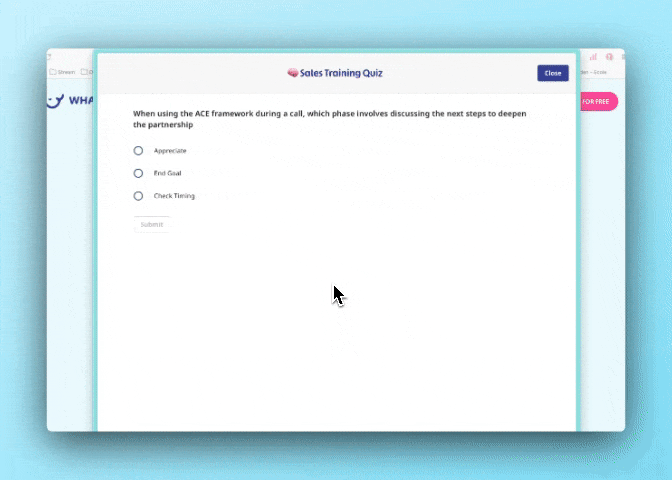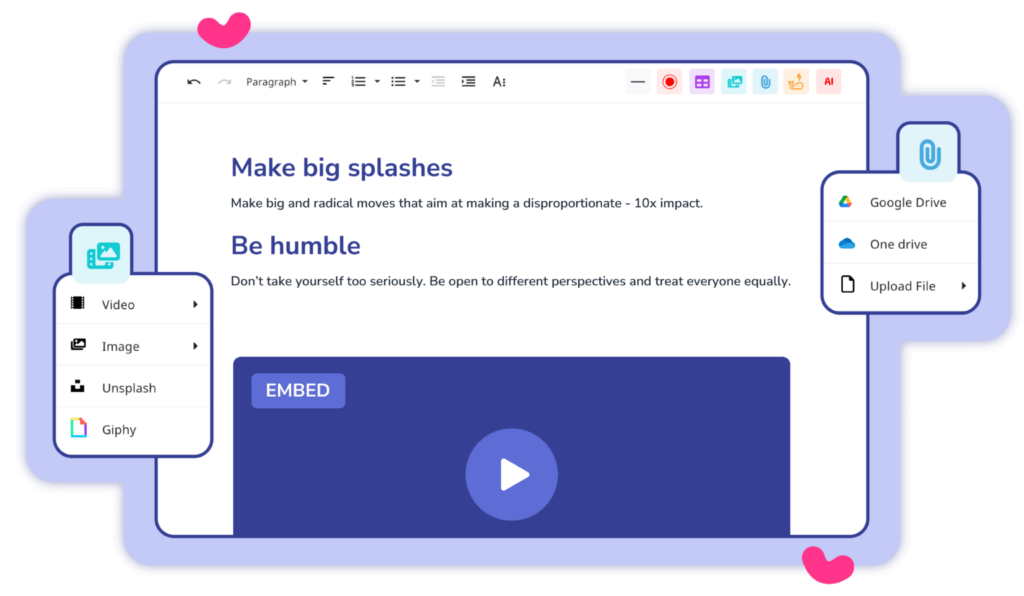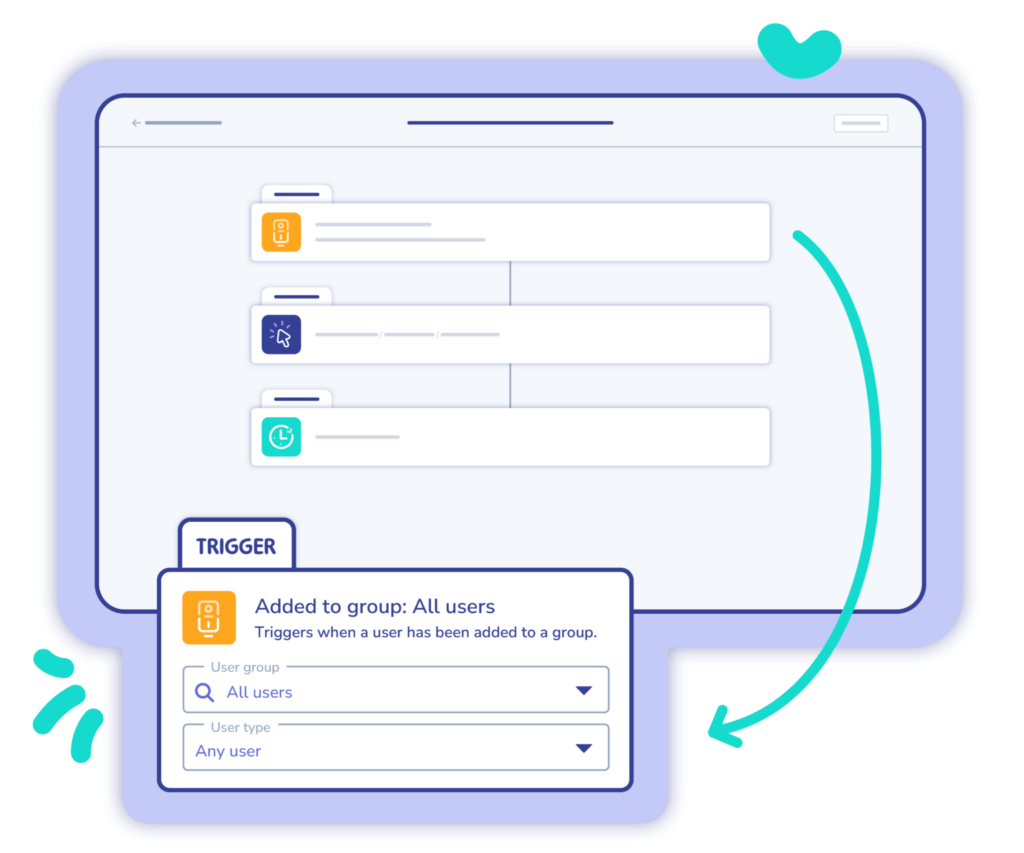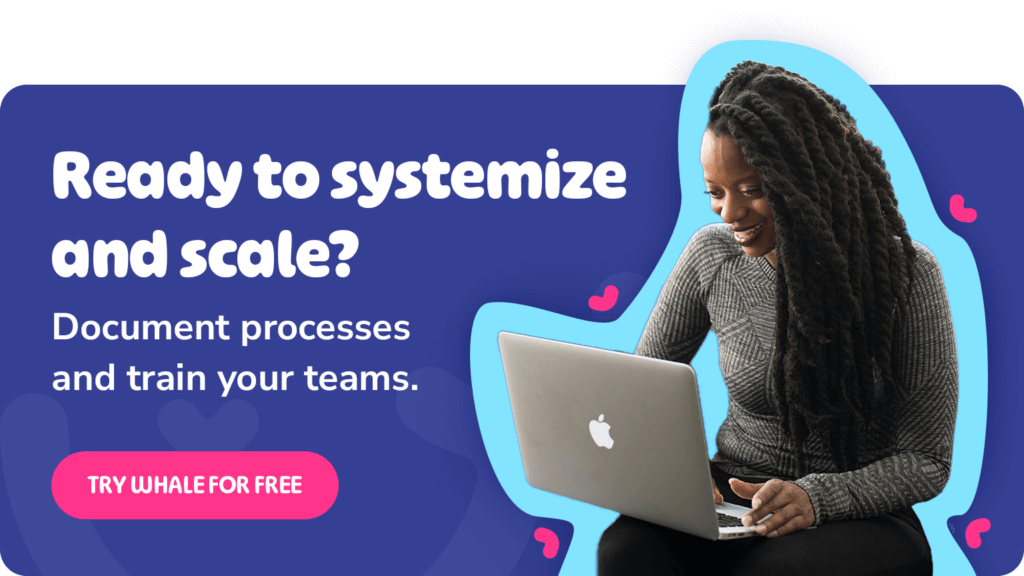Collaborative learning is the new trendy system for growth-bound teams—it’s also the one method through which learning really sticks. But what is a collaborative learning system, can it co-exist with a unilateral learning system? We have some good news.
If you ever asked someone from finance to explain the billing process to your employees instead of contacting your software’s support team, you’ve engaged in collaborative learning. Next, they need somewhere to store this information so their subject matter experts only have to share their knowledge once, so the information is input into a collaborative learning system.
As this example suggests, most companies already incorporate collaborative learning in their workspace, and it can not only live alongside unilateral learning but they empower each other.
Moreover, it’s unsurprising that collaborative learning already happens in most companies if you consider the data that collaborative employees work 15% faster, with 73% achieving better results, while isolated work can decrease productivity by up to 21%. We instinctively promote collaboration because it works.
In this article, we’ll explore how to encourage this learning culture intentionally for maximum impact on all involved and how to choose the right collaborative learning system for your team.
What is a collaborative learning system?
Collaborative learning happens when employees share their knowledge, teaching, and learning from one another at the same time. The best thing about collaborative learning is that it’s fast and efficient.
A collaborative learning system is a tool that helps teams share their knowledge and learn new, relevant information from each other in one central place. These systems are typically available via tools or software, which makes it easy for everyone to access the same information, regardless of your work environment.
How can you benefit from a collaborative learning system?
Technology’s job is to facilitate us. When it comes to learning and training, technology’s role is to amplify our human abilities to absorb and share information.
According to research by AdminControl:
- 73% of digital workplaces credit collaboration tools with greater productivity, with 70% linking better collaboration to digital tech.
- Collective action boosts focus, allowing 64% longer task engagement, fostering satisfaction and better performance.
There are 5 reasons the above is true.
1. Collaborative learning systems enable easier knowledge-sharing
Have you ever been the go-to person on a subject in your company? Then you know that everyone always needs help with something simple. And while you might be okay with helping them, covering the same topic multiple times is inefficient and can feel monotonous.
With a collaborative learning system, you can share all your knowledge on a topic once, and anyone who needs help can easily access your expertise.
For example, let’s say you know everything there is to know about onboarding new hires, but other teams are expanding too and a different team lead wants to emulate your tried-and-tested onboarding process. Instead of explaining your process verbally, you’ll share what you know via your collaborative learning system. That team lead, and anyone needing the same information afterward, can learn and access your process through the platform.
2. Systems facilitate real-time feedback
One thing us humans love about collaborative learning is that everyone can ask questions, address concerns, and thank experts for sharing their insights. We generally like positive interactions with other people. However, information gathering is not always a smooth process when done in person—one person might be too busy to help, one person might be too overwhelmed to absorb the information, or there may be a misunderstanding about what’s needed.
A collaborative learning system will let your employees share their thoughts with your internal expert, in real-time, without disrupting the workflow. This can ensure that the information shared between teams is always accurate, covered from multiple angles, and, let’s not forget, appreciated! 🤩
If a full learning system sounds too advanced, consider an open Q&A registry for teammates to ask questions, as we manage at Whale.
3. Learning systems promote continuous learning
Most companies stop training their team members after onboarding. It’s concerning therefore that LinkedIn’s Workplace Learning Report 2023 found that a lack of learning and development opportunities is among the top reasons employees leave their current employers.
When you create a learning culture and use a collaborative learning tool to document knowledge, you:
- Allow your employees to continuously learn new skills
- Enable teams to strengthen their knowledge of relevant topics
- Increase retention of employees with personal growth aspirations

4. Collaborative learning systems help reinforce knowledge
Have you ever had to learn new information and forgot half of it shortly after the course was completed? Then you know what The Forgetting Curve is, which states that we forget what we learn shortly after, well, learning it.
Your employees will likely forget what they learned even in a continuous learning environment. So, what’s the cure to The Forgetting Curve?
= Reinforcing that knowledge with action.
Tools built for collaborative learning approaches, like Whale, have quizzes or tests that increase long-term retention, helping your team remember the information they learned until they can apply it on the job.

5. Learning systems also draw extra insight into your knowledge base
When you rely on a traditional employee learning and development approach, you risk not having insight into how everything’s performing. Are your employees learning from your material? Who isn’t? Are there topics your employees would like to learn, but no one knows who to ask for help?
The best collaborative learning tools have built-in analytics that can give you insight into those exact questions.
Besides those nuggets of wisdom, you’ll also see who completed each course material and quiz and how they scored. This can help you make more data-driven decisions to improve your L&D programs.
What 5 features should you look for in a Collaborative Learning System? 👀
While those benefits are nothing to scoff at, you’ll need a system with specific features to see them. But what features should you look for?
We’ll cover a few of the top features below.
1. Content creation
Content creation is one of the most essential features you’d want your tool to have. You want somewhere your internal experts can easily go to and quickly share their knowledge.
And by default, somewhere for your learners to consume this content.
Bonus points if the tool allows them to break the information down into sections so that it’s easier to create and consume. 😉

2. Reminders
Not every department in your company will experience fast-paced industry trends like Marketing. However, that doesn’t mean the information shared in the course won’t become outdated faster than you can say, “AI won’t replace writers.”
Whether it’s the industry or internal business changes, your teams will need to ensure that the information your employees are sharing and learning is up to date.
So, you’ll need a tool that will automatically remind your subject matter experts to come back and review their material for relevancy.
3. Automation
Your employees need certain skills for specific tasks and those are generally tied to a timeline. Each time a new person joins the team, they’ll likely need to do the same tasks on a similar timeline—which is one top case for automating knowledge sharing.
Consider the employee onboarding process: when a company expands to multiple locations, each new people manager will need help onboarding new hires in a way that’s consistent with your company. You can share that knowledge in your collaborative learning tool and use automation to share the pertinent training sets and information each time someone new is hired.
Automation features allow you to proactively and consistently share this knowledge with anyone you add to that group, who needs it.

4. Gamification
Gamification features like quizzes and badges increase employee engagement enormously and encourage them to remember what they’ve learned.
As we mentioned before, even when people are active in their learning process, they still need help reinforcing what they were taught, which is why these features in your tool are key.
5. Analytics
Analytics in a collaborative learning system is a must. When you want insight into:
✅ Who completed the course material?
✅ Who remembered the information they consumed?
✅ Who hasn’t started the material they requested?
Inbuilt analytics help you see how successful your collaborative learning approach is and where you may need to make changes.
This means monitoring the collaborative learning system’s success is not yet another administrative task, but something that can also be automated for your benefit.
How to choose the best system for your teams
We’ve covered some top features you’d want in a collaborative learning system, but how would you know which one’s best for you?
Let’s look at some criteria to consider when searching for a solution.
Business needs
Not every tool will fit your exact business needs because some collaborative learning systems are built for larger teams with hundreds of employees in each department, while others are specifically intended for small companies. Differences can include features that strictly manage who can share files and complex approval processes, other tools cater to teams that need to be more agile to provide fewer blocks.
Then, you might need your software to integrate with your existing tool stack. Does your tool meet this need? Or does it offer a way to access your data from other tools?
Write out your must-haves and nice-to-haves so you know what to compare them to when reviewing your options.
Budget
Your budget is another key criterion to consider.
- How much do you have available to spend on learning and development?
- Is this system something you only want to test out so you’re not allocating a large sum of your budget towards it?
- Do you want to test the tool before investing to ensure it’s right for you?
These valid questions should be considered before moving forward with any tool.
User-friendly
To make sure you’re implementing a collaborative learning system that helps rather than hinders, make sure it will require the smallest learning curve. Is the tool something your employees would actually use, and would they need extra training to use it, or is the system innately user-friendly?
While many believe that in-person teams can get away without a central system for knowledge, its absence is not only problematic for hybrid and remote teams—all companies have a need for access to information that doesn’t require them to interrupt someone else’s deep work.
Bottom line? Implementing collaborative learning systems matters
According to Gallup, employee engagement is tied to L&D and can directly impact profitability by up to 21%, productivity, and employee turnover. So, it’s worth using everything at your disposal to maximize the potential of your collaborative learning initiatives.
See a collaborative learning system in action, and how it can slot into your existing learning culture:
FAQs on collaborative learning system
What is meant by collaborative learning?
Collaborative learning refers to an educational approach where students work together in small groups on activities or tasks. This method emphasizes active participation and shared responsibility among group members, who may work on different aspects of a task or together towards a common goal.
The effectiveness of collaborative learning relies on well-structured tasks and clear objectives, ensuring that all participants are engaged and contribute. It contrasts with unstructured group work and can include competitive elements to enhance collaboration.
What are the main characteristics of collaborative learning?
Collaborative Learning is more than a classroom technique; it’s a philosophy emphasizing teamwork over competition. Key characteristics include positive interdependence, where group success depends on each member, face-to-face interaction, and individual accountability. CL requires students to develop interpersonal and small-group skills, fostering cooperation and conflict resolution.
Group processing, where students reflect on group dynamics and outcomes, is also crucial. Techniques like “Think-Pair-Share” and “Jig Saw” exemplify Collaborative Learning’s focus on social learning and active participation.
What are the 5 stages of collaborative learning?
Collaborative learning involves five critical stages:
- Shared Learning Goals: Designing tasks around common learning objectives.
- Small-Group Learning: Engaging students in groups of 3-5.
- Cooperative Behavior: Building trust, planning together, and understanding team support.
- Positive interdependence: Setting mutual goals to ensure group success.
- Individual accountability: Ensuring each student fulfills their role and stays committed to the task.
These principles guide effective group learning, fostering collaboration and individual responsibility.




